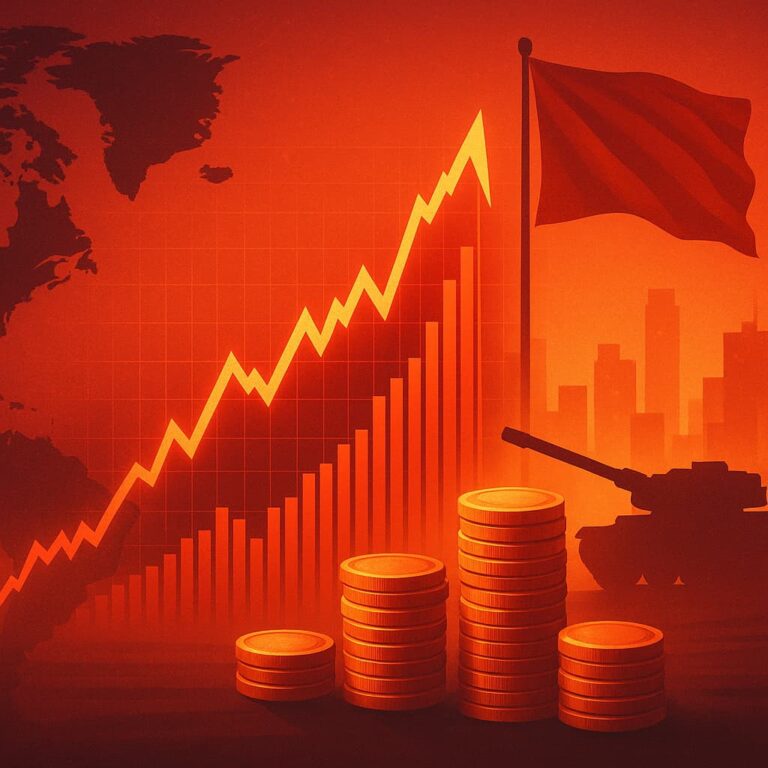Oil isn’t just a commodity—it’s a financial shockwave.
In 2025, tensions in the Middle East and OPEC’s unpredictable supply moves are fueling instability. The results ripple through energy prices, inflation data, currency shifts, and investor psychology.
Markets don’t need a full-blown war to panic. A supply cut or a drone strike near an oil facility can send prices soaring.
Understand the link between geopolitics and your portfolio before it’s too late.
Rising Tensions, Rising Oil: How the Middle East Shapes Markets
The Middle East still holds key energy corridors. Any disruption here shakes the foundations of global supply—and investor confidence.
Key Flashpoints in 2025
- Iran–Israel skirmishes near the Strait of Hormuz
- Ongoing civil unrest in Iraq disrupting pipeline operations
- Yemen’s Houthi rebels targeting Saudi export infrastructure
- Red Sea shipping routes under threat from regional blockades
Market Responses
- Brent crude crossed $110 after drone attacks in northern Iraq
- Defense stocks surged while travel and aviation equities dropped
- Oil-importing countries revised GDP projections downward
- Safe-haven demand lifted gold and the Swiss franc
Case Study: April 2025 Oil Spike
After a missile strike disabled a Saudi Aramco facility, oil jumped 12% in a single week. U.S. energy ETFs outperformed, while inflation expectations rose globally.
Stay informed. One regional headline can rewrite your investment week.
OPEC Supply Cuts and Price Volatility
OPEC+ holds massive influence over oil supply. In 2025, the cartel’s cuts are more aggressive and more politically motivated than ever.
Recent OPEC Decisions
- A surprise 2 million barrels/day cut in March 2025
- Extended cooperation with Russia despite sanctions
- New production quotas affecting Nigeria, UAE, and Iran
- Push for $100 oil to stabilize member nation budgets
How Markets React
- Energy stocks rally while manufacturing sectors weaken
- Inflation prints hotter, delaying rate cuts by central banks
- Consumer sentiment drops as fuel prices hit wallets
- Bond yields rise on higher inflation expectations
Example: Emerging Market Fallout
Countries like India and Turkey saw sharp currency depreciation after OPEC’s supply cut. Investors pulled out of local bonds fearing inflation and trade deficits.
Monitor OPEC moves like Fed meetings—they’re just as market-moving.
Financial Market Spillovers Beyond Oil
The effects don’t stop with oil and gas. Financial assets worldwide adjust to the shock—especially when tensions and supply issues hit at the same time.
Key Spillover Channels
- Inflation: High energy prices feed into headline CPI
- Central Banks: Rate decisions shift based on energy-driven price data
- Currencies: Oil exporters gain (like CAD), importers lose (like INR, JPY)
- Equities: Defensive sectors outperform, cyclicals suffer
Global Asset Movements
- U.S. Treasuries sell off on higher inflation fears
- Gold hits new highs as geopolitical insurance
- The U.S. dollar spikes temporarily, but gives ground to energy-linked FX
- Oil futures see heavy trading volume, with volatility doubling
Example: Equity Rotation
When oil surged in May 2025, investors rotated from tech to energy and utilities. Oil majors like Chevron and Total saw record options activity.
Use oil as a signal, not just a commodity price. It reflects deeper forces.
Positioning Your Portfolio in a Geopolitical Energy Market
Smart investors don’t just watch oil—they respond. The right hedges and exposures can protect your capital or even enhance returns.
Portfolio Strategies for 2025
- Allocate 5–10% to energy ETFs or oil futures
- Hold defensive equities like utilities, health, and gold miners
- Diversify currency holdings with exposure to CAD, CHF, and SGD
- Use inflation-protected bonds (TIPS) for fixed income stability
Why Strategic Hedging Matters
- Unexpected price spikes can quickly reduce real returns
- Oil shocks can reverse central bank paths—catching investors off guard
- Diversified global assets reduce country-specific supply exposure
- Gold and energy assets often offset drawdowns in equities
Prepare before the next headline drives markets into panic mode.
सामान्य प्रश्न
How does Middle East tension affect oil prices?
Supply disruptions, even if temporary, create fear of shortages. This fear leads to higher prices and speculative trading.
Why does OPEC’s supply decision matter for global inflation?
OPEC controls over 40% of global oil supply. A cut reduces output, raising prices that ripple into transportation, manufacturing, and consumer goods.
What assets do well when oil prices spike?
Energy stocks, gold, commodity currencies like CAD or AUD, and inflation-linked bonds often outperform during oil shocks.
How can I hedge against oil-driven market volatility?
Use diversified ETFs, increase exposure to defensive sectors, and hold a mix of currencies and real assets.
Final Thoughts: Watch the Oil, Read the Risk
Middle East flashpoints and OPEC cuts don’t just move energy markets. They reshape global finance, shifting bond yields, equity sectors, currencies, and inflation forecasts.
In 2025, investors must treat geopolitical energy shocks as macroeconomic events—not just headlines.





